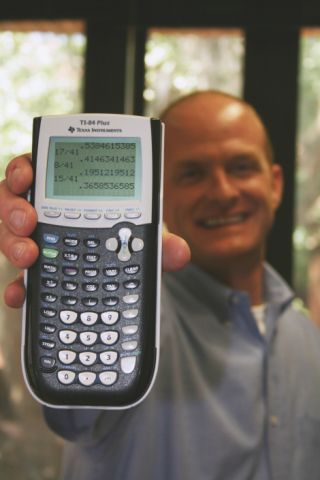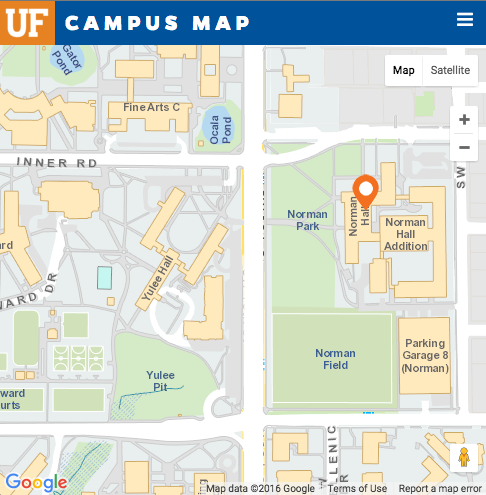Graphing-networking technology may revolutionize algebra teaching

Associate Professor Stephen Pape with one of the revolutionary graphing calculators that is changing the way mathematics is taught.
Since the early 1990s, a humble little computing device has caused a quiet revolution in the way mathematics is taught in America’s middle and high schools.
For generations, algebra students painstakingly plotted points to sketch the graph of an equation on graph paper, a process that often produced more eraser marks than answers. With the advent of the graphing calculator – a souped-up version of the hand-held calculator once scorned by mathematics teachers – students are able to plot, adjust and even play with equations with relative ease.
Now a team of education researchers is taking the device to the next level. UF College of Education Associate Professor Stephen Pape and his colleagues are providing algebra teachers around the nation the opportunity to learn how to implement in-class wireless networks linking all their students’ calculators with the teacher’s computer – a network that can turn the once-solitary process of ciphering into a social activity.
“When the teacher can see every student’s answer projected on the screen in real time and provide instant feedback, an algebra class becomes a true learning community,” Pape said. “If 60 percent of my class gets a particular problem wrong, we can stop what we’re doing and
discuss it then and there.”
Pape is one of the lead investigators on a $3 million, four-year U.S. Department of Education study that has placed new calculator-networking technology in the classrooms of approximately 100 algebra teachers and 25 physical science teachers in 28 states. Pape and several faculty members from The Ohio State University (where Pape once taught) and the Better Education Foundation are examining the effect that technology is having on the learning and achievement of more than 10,000 students.
“The graphing calculator has changed the approach to teaching in a lot of Algebra I classrooms, but this technology takes it a step farther,” Pape said.
First introduced in the mid-1980s, the modern-day graphing calculator is a fully programmable handheld computer that allows students to plot equations and show their results instantly, run instructional programs designed to teach specific mathematics skills, and even dabble in programming on their own. At a relatively low cost of $125 per unit, who cares if the little computer looks dorkier than a pocket protector?
Now, enter a device called the Navigator, newly released by calculator-maker Texas Instruments. Navigator is a wireless networking system that allows teachers to see what each student is doing on his or her graphing calculator in real time – and display those results on an overhead projector. The system also allows students to wirelessly download quizzes and other activities.
“The teacher, and the whole class, can see a graph of the students’ responses to a question posed in class. This provides the teacher with far greater knowledge of the class’ understanding of a concept – and the teacher can show every student’s answer plotted out on the same screen,” said Pape. “Only the teacher knows who is getting the answers right and who is getting them wrong.”
The networking technology, which costs about $3,900 per classroom allows a teacher to instantly know when a significant number of students have arrived at an incorrect answer – and it allows students to see that they are not alone in making mistakes in mathematics.
The project is about three-fourths through its four-year run, though Pape says initial results suggest the networked calculators are indeed improving performance in many classrooms.
“Students are more engaged, because their answers will be on the board instantly,” he said. “Even though they can make mistakes anonymously, they still feel pressure to get it right.”
Pape says this sort of classroom networking holds promise for many subjects.
“English teachers and history teachers are now exploring ways to use this system in their classrooms,” he said. “This really is a powerful technology.”
— Tim Lockette




